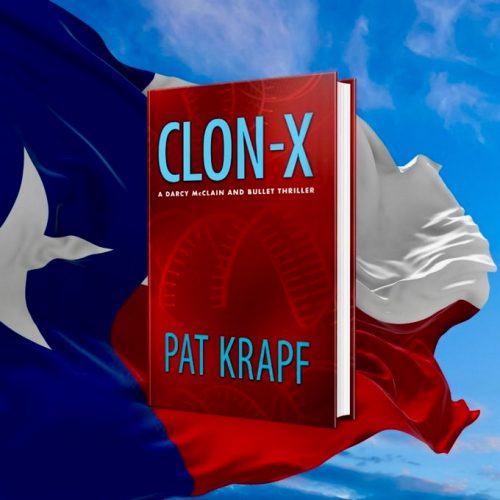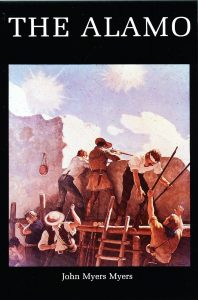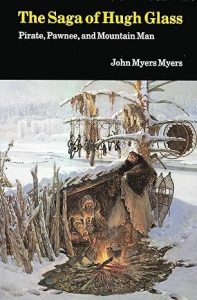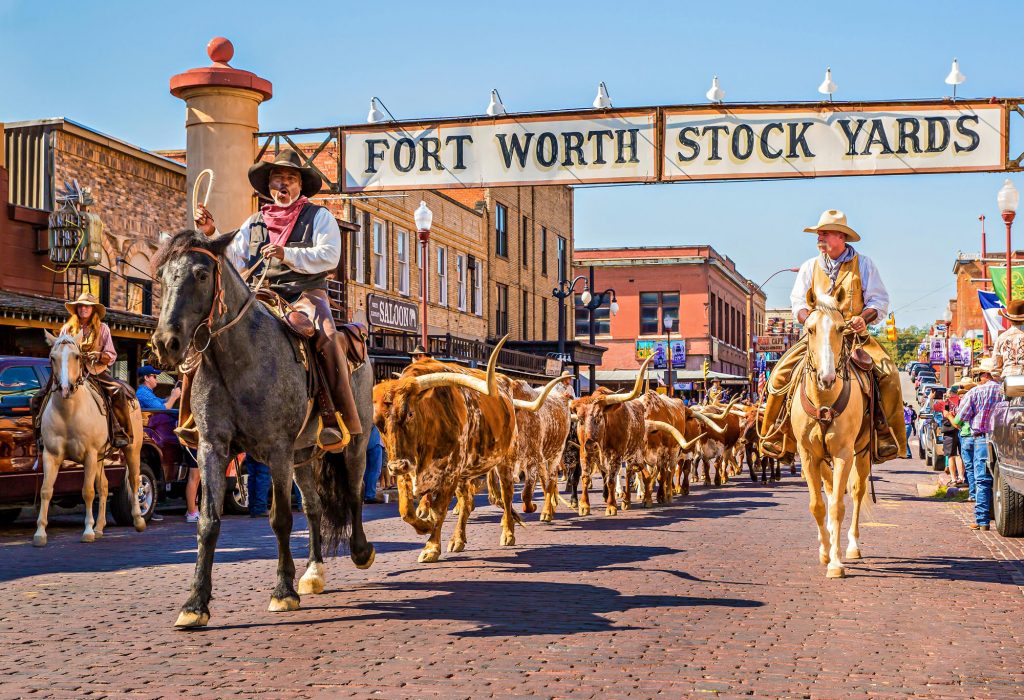Hardwired
Blue Angel
 So far, every novel in the Darcy McClain and Bullet Thriller Series has come to life in pretty much the same way. I start with a spark of an idea. Often, these sparks come years in advance of the actual novel. When they do, I stow them away for future use. For example, chapter one of book four flared to life in 2003 during a walk with my first giant schnauzer, Shotz. She found a trash bag in a creek in Keller, Texas. The spark for CLON-X.
So far, every novel in the Darcy McClain and Bullet Thriller Series has come to life in pretty much the same way. I start with a spark of an idea. Often, these sparks come years in advance of the actual novel. When they do, I stow them away for future use. For example, chapter one of book four flared to life in 2003 during a walk with my first giant schnauzer, Shotz. She found a trash bag in a creek in Keller, Texas. The spark for CLON-X.
In many cases, an ending soon follows. While the last chapter may change – and usually for the better by the time the plot unfolds – not once has the concept for the opening chapters been altered in any major way. Each one has set the tone for the plot to unfold.
The mind of a writer is an interesting phenomenon. Who troops through an arroyo in Taos, New Mexico, picking up trash left behind by those who disrespect the land, and ends up collecting, among other things, a filthy floppy disk? It isn’t just a disk, but the impetus for an entire book, Brainwash.
Or why can’t the author simply attend a fun event like the Albuquerque Hot Air Balloon Festival without conjuring up an explosion, blowing a hot air balloon out of the sky with a laser no less? Gadgets is born.
While on vacation in San Francisco and snapping photos of the Palace of Fine Arts, the author envisions this as the ideal place for a murder, Genocide.
A weekend getaway to an upscale hotel in Dallas to celebrate an anniversary becomes the perfect location to stage a massive fire to cover the true reason for the blaze. And there’s the spark for book five, Blue Angel.
Synopsis for Blue Angel
Darcy’s best friend, Samantha Logan, is lured out of retirement by the CIA for a Special Op. When Sam doesn’t show up in Dallas as planned, Darcy senses that Sam is in trouble and begins to track her whereabouts. Her desperate hunt leads Darcy on a footrace across Europe, always trailing steps behind, until she resorts to help from her canine partner, Bullet.
To complicate matters, the CIA is concerned that Darcy and Bullet will blow Sam’s cover and expose the secret operation, so the Agency deploys field agents to stalk them. As if that weren’t enough, Darcy’s former FBI partner, Dan, is worried that both women might be in grave danger, so he’s shadowing them as well.
Thrown back into the environment in which she was raised, Darcy learns the shocking truth about her childhood. These startling revelations shake her adult world, and will change her life forever.
My Favorite Question
The one I’m hearing a lot lately. When is Blue Angel coming out? I actually love the question because it means you’re eager to know more about what Darcy and Bullet are getting up to. So now you have your first hint. Want to track the progress of getting their latest adventure into your hands? That’s all going to be in my monthly newsletter, which will also feature new blog posts. To subscribe, go to patkrapf.com. I promise not to spam your inbox. You’ll only hear from me monthly. And you can opt out at any time. But, of course, I hope you’ll stay.
Fact, Fiction, or Contradiction?
 During my research of Texas history, a persistent point kept hitting home –something I had never given much thought to, but should have. Often the accuracy of the details and the authenticity of the events were called into question as contradictions arose in the storytelling. Of the few people who knew the stories, almost none were professional writers. In fact, many pioneers couldn’t read or write and often led solitary lives with no one to witness or chronicle their experiences. Of those who wrote personal journals, their diaries were very late in surfacing, some only in this century. As for the stories handed down by word of mouth, there’s no way to tell if any had been embellished as the narratives passed from one person to the next.
During my research of Texas history, a persistent point kept hitting home –something I had never given much thought to, but should have. Often the accuracy of the details and the authenticity of the events were called into question as contradictions arose in the storytelling. Of the few people who knew the stories, almost none were professional writers. In fact, many pioneers couldn’t read or write and often led solitary lives with no one to witness or chronicle their experiences. Of those who wrote personal journals, their diaries were very late in surfacing, some only in this century. As for the stories handed down by word of mouth, there’s no way to tell if any had been embellished as the narratives passed from one person to the next.
That’s why I read with great interest Journal of A Trapper, a personal log written by frontiersman Osborne Russell, recounting his nine years as a fur trapper in the Rocky Mountains from 1834 to 1843. His firsthand descriptions of the mountain terrain and lush valleys inspired me. As he trapped in the greater Yellowstone region before leaving the solitary mountain life to settle in Oregon, his encounters with grizzlies and wolves were at times hair raising, and his run-ins with the American Indians were sometimes, but not always, hostile.
This rather lengthy prelude brings me to another question. What really happened at the Alamo? When I read historian John Myers’ book on the history of The Alamo, it was obvious that the author had done exhaustive research to lay bare the authenticity of the siege and the legendary characters – Bowie, Travis, Crockett, and Santa Ana – who were behind the heroism that made the Alamo story immortal. But I also wish historians had given more credence to Travis’s slave, Joe, who was interviewed a few days after the siege but whose statements were put aside. He was described as intelligent, and he was there to see what happened – one of the few people able to give a firsthand account. That prompted me to learn more about Joe’s story of the battle at the Alamo. Read more about Joe: https://www.austintexas.gov/sites/default/files/files/Joe%20Article.pdf.
My fascination with knowing more about Joe paralleled my prior research on another slave, Bob Jones, who overcame enormous obstacles to become a prosperous landowner in the Roanoke-Southlake area, a well-respected rancher, and family man. Link back to prior blog post on Bob Jones.
 Impressed by Myers’s exhaustive research and his dedication to chronicle the details of the Alamo, I promptly bought his book titled The Saga of Hugh Glass: Pirate, Pawnee, and Mountain Man. Is this legendary hero’s story true? Did Glass survive being mauled by a grizzly bear and, when left for dead by his fellow trappers, have the will and fortitude to crawl for six weeks until he reached the nearest settlement for help? Buy the book and judge for yourself.
Impressed by Myers’s exhaustive research and his dedication to chronicle the details of the Alamo, I promptly bought his book titled The Saga of Hugh Glass: Pirate, Pawnee, and Mountain Man. Is this legendary hero’s story true? Did Glass survive being mauled by a grizzly bear and, when left for dead by his fellow trappers, have the will and fortitude to crawl for six weeks until he reached the nearest settlement for help? Buy the book and judge for yourself.
Then analyze the two movies that were based on Hugh Glass’s life and ask yourself this question. Was either the 1971 movie, Man in the Wilderness starring Richard Harris, or the more recent movie, The Revenant starring Leonardo DiCaprio, an authentic depiction of the remarkable real-life survival story of Hugh Glass? Or were they more Hollywood than historically accurate?
Hitting closer to home, how many of us have taken time from our busy schedules to chronicle our own lives? When was the last time we sat down with our family and asked those all-important questions that seem to arise after our loved ones are deceased? I often find myself thinking, “Why didn’t I ask before they passed on? Now I’ll never know.”
On a side note but related, almost every time I charge my camera batteries I muse, What a great invention! How I wish digital SLRs had been around during all those years of growing up overseas. Sure, I have Polaroids, but the quality is lacking and fades with age. On the other hand, photos in general are wonderful visual memories of times past. I did keep a diary of those informative years aboard, and I’m thankful that my father kept a log . . . of certain events. But nothing compares to a face-to-face talk to get the facts, cutting out the fiction or contradiction from the truth.
Texas: Fort Worth

Credit: https://www.facebook.com/lavenderpathways
The Cross Timbers of Texas is composed of two long and narrow strips of forest region that extend parallel to each other from Oklahoma southward to Central Texas and form a marked contrast to the prairies of the state. Early travelers through north Texas coined the name Cross Timbers because they repeatedly crossed these timbered areas, which proved to be a barrier to their travel on the open prairies to the east and west. No major metropolitan areas lie entirely within the Cross Timbers, although roughly the western half of the Dallas-Fort Worth Metroplex does, including the city of Fort Worth.
Originally settled in 1849 as an army outpost on a bluff overlooking the Trinity River, Fort Worth was one of eight forts assigned to protect settlers from Indian attacks. Despite myths to the contrary, there were no major battles with Native Americans at the fort.
How did Fort Worth get its name? On June 6, 1849, Mexican-American War hero General William Jenkins Worth, established a camp on the banks of the Trinity River and the fort became his namesake. The outpost was abandoned on September 17, 1853.
Known as Cowtown for its association with the cattle drives in which millions of longhorns were herded on the Chisholm Trail, Fort Worth also calls itself “the place where the West begins.” And with the arrival of the Texas and Pacific Railway, Fort Worth became the heart of the state’s ranching industry, with the Fort Worth Stockyards transformed into a prized livestock center.
With this boom came the cowboys who stocked up on supplies in Fort Worth, then a dusty and lawless town, home to the brave and the brawling, the solider, the frontiersman, and the outlaw, who caroused its taverns and dance halls. During this wild era of cattle drives, gambling parlors and saloons sprang up around Fort Worth, and soon this rough-and-tumble frontier town won the moniker of Hell’s Half Acre.
Hell’s Half Acre was a precinct of Fort Worth designated as a red-light district beginning in the early- to mid-1870s in the Old Wild West. It came to be called the town’s Bloody Third ward because of the violence and lawlessness. In 1900, after robbing a bank in Nevada, Butch Cassidy and the Sundance Kid and their Wild Bunch gang took up in the Acre to avoid capture.
By the late 1880s, Fort Worth citizens had grown tired of the Wild West within their own city. Hell’s Half Acre accounted for about half of the city’s crimes. Prostitution, violence, and regular suicides were especially embarrassing for leaders seeking city growth. Looking to rein in some of the criminality, Fort Worth installed a permanent police force in 1887.
By 1900, Fort Worth was one of world’s largest cattle markets, and the population tripled between 1900 and 1910. Growth continued, based on various multimillion-dollar industries—meat packing, flour milling, grain storage, oil, aircraft plants, and military bases.
But it wasn’t until the US entered World War I in 1917 and many young men headed off to fight in Europe that the taming of Fort Worth really began. With Prohibition in 1920 came another calm. It certainly didn’t do away with drinking, but at least swilling booze was no longer a wide-open activity. With these two events, much of the lawlessness of the Acre was fading and a much more bridled Fort Worth eventually emerged.
Today, Fort Worth is the 5th largest city in Texas, and many of its earliest buildings endure to this day — art deco skyscrapers stand beside older redbrick stalwarts. Although the dust of the old west is gone, Fort Worth’s proud Western heritage lives on.

